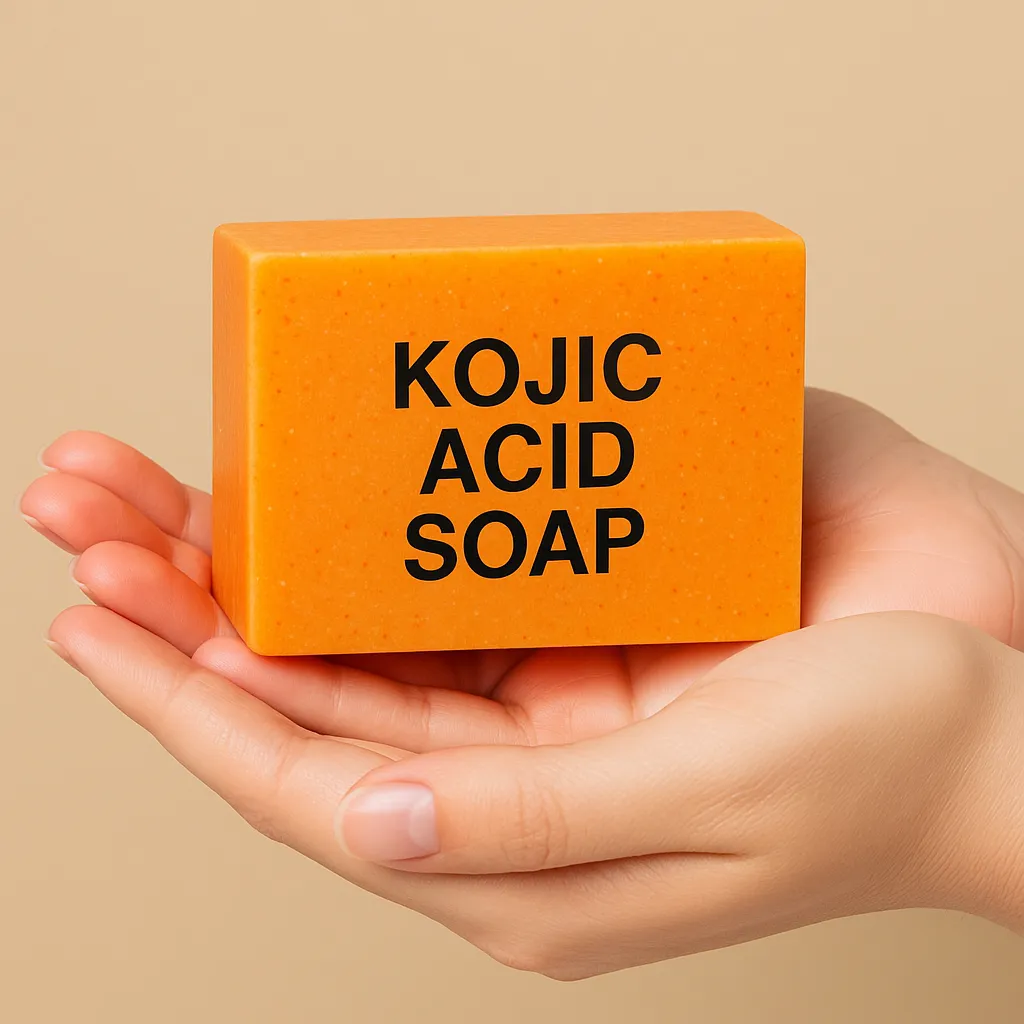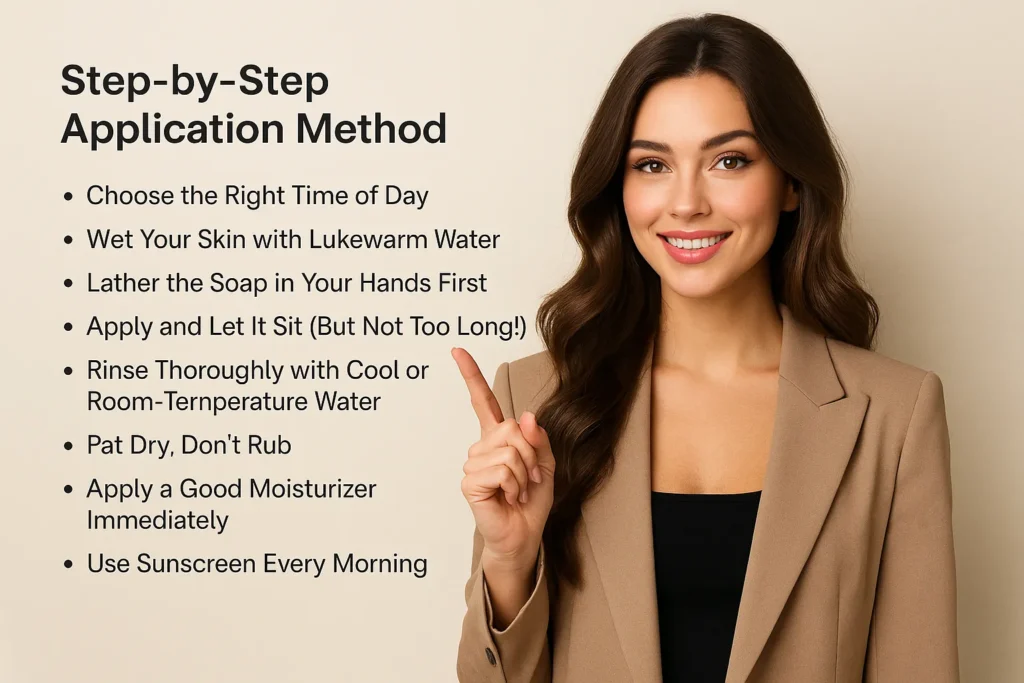When it comes to achieving clear, radiant, and even-toned skin, one of the most common questions people ask is: which soap is best for skin whitening? With thousands of products flooding the market, it’s not easy to know which ones actually deliver results—and which are just full of marketing hype.
As someone who has tested and studied skincare over the years, I’ve come to understand that not all whitening soaps are created equal. Some contain powerful ingredients that naturally reduce melanin and improve skin tone, while others simply dry out the skin or provide temporary fairness through bleaching effects. That’s not what we want.
In this article, I’ll walk you through:
- What makes a good skin whitening soap
- Ingredients that really work for glowing, fairer skin
- 7+ trusted soaps that are known to improve complexion safely
- How to use them for best results
- Mistakes to avoid
- And a few personal insights you won’t find in generic reviews
Let’s dive into the clean truth.
Why the Right Soap Matters in Skin Whitening
Your skin is your body’s largest organ. It absorbs what you apply—and reacts quickly to harsh chemicals. Using the wrong soap, especially for whitening, can lead to:
- Dryness and flakiness
- Increased sun sensitivity
- Uneven patches
- Breakouts
So when choosing which soap is best for skin whitening, it’s essential to focus on:
- Safe ingredients like kojic acid, glutathione, vitamin C, licorice extract
- pH-balanced formulations
- Trusted brands with real reviews
- Long-term results, not instant bleaching
Key Ingredients to Look for in a Good Skin Whitening Soap.

When choosing which soap is best for skin whitening, the ingredients on the label reveal everything. A high-quality whitening soap isn’t just about making skin appear fairer—it’s about gently reducing excess melanin, clearing pigmentation, and reviving natural radiance. Let’s explore each powerful ingredient in detail:
1. Kojic Acid
Kojic acid, derived from fermented rice or mushrooms, is one of the most powerful natural skin lightening agents available. It works by inhibiting the enzyme tyrosinase, which is essential for melanin production. When used consistently, kojic acid soap can help:
- Fade dark spots caused by sun exposure
- Lighten acne scars
- Improve the appearance of melasma
- Brighten dull or uneven skin tone
What makes it special:
It works gradually without harsh bleaching, making it ideal for long-term use. Just make sure to use sunscreen during the day, as kojic acid can increase sun sensitivity.
2. Glutathione
Glutathione is often called the master antioxidant. Naturally produced in the body, it plays a major role in detoxification, but in skincare, it’s prized for its melanin-inhibiting effects.
In soap form, glutathione:
- Reduces oxidative stress and inflammation
- Gently slows down melanin production
- Evens out the skin tone and reduces dark spots
- Brightens the skin from within, not just on the surface
Best for:
People with hyperpigmentation, tan buildup, or dull skin caused by pollution and stress.
3. Vitamin C
This vitamin doesn’t just support your immune system—it also boosts collagen production, fades blemishes, and brightens the complexion.
Soaps enriched with stabilized vitamin C:
- Help repair skin damaged by UV rays
- Stimulate new cell regeneration
- Add a visible glow within 1–2 weeks
- Are safe for all skin types if pH-balanced
Tip:
Look for ascorbic acid or magnesium ascorbyl phosphate in the ingredient list.
4. Licorice Extract
If you have sensitive or acne-prone skin, licorice extract is one of the most underrated brightening agents. It contains glabridin, which:
- Inhibits melanin production
- Soothes inflammation and redness
- Reduces dark patches caused by acne or eczema
Unlike hydroquinone or bleaching agents, licorice is completely natural and gentle, making it ideal for facial use.
5. Alpha Arbutin
A plant-based compound that delivers similar effects to hydroquinone—but without the irritation. Alpha arbutin:
- Reduces brown spots and age marks
- Minimizes post-acne pigmentation
- Works slowly but deeply over weeks of use
Many premium soaps blend alpha arbutin with kojic acid or niacinamide for a powerful combo.
6. Papaya Extract
Papaya contains papain, a natural enzyme that digests dead skin cells and impurities. Regular use of papaya-based soaps:
- Brightens and exfoliates the skin
- Removes tan and surface dirt
- Reveals smoother, clearer skin underneath
It’s a great ingredient for those who spend time outdoors and are prone to sun exposure and tanning.
Which Soap is Best for Skin Whitening? (Top 7 Soap Reviews)
These soaps have been handpicked based on effectiveness, real reviews, safety, and affordability. Each one contains clinically or naturally proven ingredients that help whiten and brighten skin without causing damage.
1. Kojie San Skin Lightening Soap
Key Ingredients: Kojic Acid, Coconut Oil
In-depth review:
Kojie San is a staple in the skincare routines of millions globally, especially in Southeast Asia and the Middle East. Its main ingredient, kojic acid, gently removes dead skin cells and lightens discoloration. The added coconut oil balances the drying effect, making it safe for long-term use on the body.

How I used it:
I started with alternate-day use for the first week, then moved to daily application. I lathered it, let it sit for 30 seconds, and rinsed off. Within 3 weeks, my arms and neck looked brighter and more even-toned.
Pros:
- Fast visible results on tan and pigmentation
- Trusted worldwide
- Mild coconut scent
Cons:
- May cause dryness if not followed by moisturizer
- Avoid facial use if you have sensitive skin
2. Glupa Skin Whitening Soap (Glutathione + Papaya)
Key Ingredients: Glutathione, Papaya Enzyme, Vitamin C
In-depth review:
This soap brings together the powerful antioxidant properties of glutathione with the exfoliating magic of papaya. It’s designed to both detoxify the skin and enhance cellular turnover, revealing fresher skin underneath.
Real-world use case:
One of my friends used this after her Goa vacation tan. After just 10 days of use, the sun damage on her legs and arms visibly lightened.
Pros:
- Dual-action: detox + exfoliate
- Softens skin as it brightens
- Suitable for daily use
Cons:
- Slight smell of papaya (may not be for everyone)
3. Silka Papaya Skin Whitening Herbal Soap
Key Ingredients: Papaya Extract, Vitamin E
In-depth review:
Silka has built a loyal fan base by offering gentle yet effective herbal soaps. This particular one is popular among students and working professionals who want skin brightening without harsh chemicals. The papaya enzymes gently exfoliate while vitamin E nourishes the skin barrier.
Why it works:
Teenagers love this because it is safe, budget-friendly, and doesn’t strip the skin of oils. Visible glow starts showing within 2 weeks with consistent use.
Pros:
- Herbal formulation
- Youth-friendly and mild
- Pocket-friendly
Cons:
- Slower results on darker pigmentation
4. Dr. Alvin Kojic Acid Soap
Key Ingredients: Kojic Acid, Tea Tree Oil, Vitamin C
In-depth review:
Often found in dermatology starter kits, this soap offers a higher strength kojic blend ideal for stubborn areas like elbows, knees, and back. It’s best for body use and is known to reduce back acne marks and uneven tone.
Pro tip:
If you’re trying this on your body, start with a patch test. Sensitive users should use it only twice a week.
Pros:
- Strong pigmentation-fighting formula
- Reduces body acne and discoloration
- Clinic-trusted
Cons:
- Not for sensitive face areas
- Can sting if used on cuts or broken skin
5. Vaadi Herbals Saffron Skin Whitening Soap
Key Ingredients: Saffron, Goat Milk, Turmeric
In-depth review:
This Indian herbal soap combines ancient Ayurvedic wisdom with modern formulation. Saffron enhances glow, goat milk softens the skin, and turmeric protects from environmental damage.
Who should use it:
Anyone who wants glow more than bleaching. This soap brings a rich lather and a refreshing scent. Best results come with twice-a-day use.
Pros:
- No artificial chemicals
- Perfect for daily facial use
- Made for Indian skin tones
Cons:
- May melt fast if not stored properly
6. Marie France Kojic Soap
Key Ingredients: Pure Kojic Acid, Orange Peel Extract
In-depth review:
Considered a professional-grade soap, Marie France is often used in whitening regimens prescribed by aesthetic experts. It’s intense, so it’s not for beginners, but it delivers results when used wisely.
How to use:
Use only at night, apply to damp skin, leave for 20 seconds max, and rinse off. Always follow with a calming moisturizer.
Pros:
- Strong action on scars, elbows, back
- Quick visible effects
- Helps with body acne marks
Cons:
- Can’t be used daily
- Not suited for delicate areas
7. Beauché International Skin Lightening Soap
Key Ingredients: Kojic Acid, Glycerin, Vitamin A
In-depth review:
This brand offers a complete whitening set, but the soap itself has a cult following. It clears mild acne, fades scars, and enhances glow when used as part of a weekly skincare routine.
Special tip:
Use in combination with aloe vera gel at night to reduce potential dryness.
Pros:
- Suitable for people in their 20s and 30s
- Balanced blend of whitening + hydration
- Visible smoothness after just a few washes
Cons:
- May not work as well alone on deep melasma (combine with other treatments)
How to Use Whitening Soap Effectively (Expert Routine for Visible Glow)
Using the right soap is only half the equation—how you use it makes the real difference. Many people give up on even the best whitening soaps because they don’t see results, often due to improper usage or lack of consistency.
Read more topics on; https://glowidy.com/
If you’re truly asking which soap is best for skin whitening, you must also ask: Am I using it correctly?
Here’s a complete guide to using skin whitening soap for maximum results, safely and efficiently.
Step-by-Step Application Method
This method is dermatologist-approved and designed to give you visible results without damaging your skin.
🧼 1. Choose the Right Time of Day
Most whitening soaps are best used once a day, ideally in the evening when your skin is not about to be exposed to sun or pollution.
- Morning use is fine if the soap is mild (like papaya or saffron-based).
- Night use is better for soaps with kojic acid, glutathione, or arbutin, as they can increase sun sensitivity.
💦 2. Wet Your Skin with Lukewarm Water
Before applying the soap, splash your face or body with lukewarm water to open up the pores and prepare the skin for cleansing.
- Avoid hot water—it can dry and irritate the skin.
- Lukewarm water helps in better absorption of active ingredients.

🫧 3. Lather the Soap in Your Hands First
Instead of directly rubbing the soap bar on your face or body:
- Rub it between your palms until a thick lather forms.
- This ensures even application and prevents micro-tears on the skin (especially important for sensitive or acne-prone areas).
⏳ 4. Apply and Let It Sit (But Not Too Long!)
Gently massage the lather onto your skin in circular motions and let it sit for 20 to 60 seconds, depending on the soap’s strength.
- For kojic acid or glutathione soaps, 30 seconds is enough for beginners.
- Herbal or papaya-based soaps can be left on for up to 1–2 minutes.
⚠️ Never leave it on too long. Doing so may lead to redness, dryness, or sensitivity, especially on your face.
🚿 5. Rinse Thoroughly with Cool or Room-Temperature Water
Cool water helps close the pores and locks in the benefits.
- Make sure to rinse off completely—no residue should be left behind.
- Incomplete rinsing can cause irritation or dryness over time.
🧴 6. Pat Dry, Don’t Rub
Use a clean, soft towel to gently pat your skin dry. Rubbing can cause friction, especially if your skin is already being treated with actives.
🧴 7. Apply a Good Moisturizer Immediately
This step is non-negotiable. Most whitening soaps reduce melanin and exfoliate the skin—this can lead to dryness if not followed with hydration.
Use:
- A non-comedogenic moisturizer for oily skin
- A hydrating gel or cream for dry/sensitive skin
- Look for ingredients like aloe vera, ceramides, or niacinamide
☀️ 8. Use Sunscreen Every Morning
If you’re using whitening soap—even only at night—you must apply SPF during the day.
- Go for SPF 30+ or higher, especially if your soap contains kojic acid or vitamin C.
- UV rays can undo the brightening benefits and cause even more pigmentation if skin is unprotected.
Best Usage Frequency (Based on Skin Type)
| Skin Type | Recommended Use Frequency | Caution |
|---|---|---|
| Oily Skin | 1–2 times daily | Follow with oil-free moisturizer |
| Dry Skin | Every alternate day | Use creamy moisturizer right after |
| Sensitive Skin | 2–3 times per week (max) | Choose mild papaya/saffron-based soaps |
| Normal/Combination | Once daily, evening preferred | Adjust based on weather or skin response |
How Long Until You See Results?
The timeline for visible results depends on:
- Skin tone
- Type of pigmentation
- Lifestyle habits (sun exposure, diet, sleep)
But here’s a general idea:
- First 7 Days: Skin feels cleaner, softer, and more refreshed
- After 2 Weeks: Mild glow and tan reduction become visible
- 4–6 Weeks: Noticeable brightening and fading of dark spots
- 8+ Weeks: More even skin tone, less dullness, healthier glow
Remember: The key is consistency, not intensity. Don’t overuse or mix too many actives.
Tips to Boost Whitening Soap Results Naturally
- Stay Hydrated: Drink 2–3 liters of water daily.
- Sleep Well: Skin regenerates while you sleep. Aim for 7–8 hours.
- Eat Skin-Friendly Foods: Add citrus fruits, green veggies, nuts, and omega-3s to your diet.
- Exfoliate Gently Once a Week: Use a mild scrub or oatmeal mask (not with active soap).
- Avoid Smoking or Excess Caffeine: They contribute to dullness and uneven tone.
Common Mistakes to Avoid
🚫 Using it too often — More isn’t better. Overuse strips natural oils.
🚫 Skipping SPF — Whitening soaps make skin more prone to sun damage.
🚫 Using expired products — The actives degrade over time and can irritate.
🚫 Rubbing directly with the bar — It can cause micro-cuts and uneven application.
🚫 Combining too many whitening products — This can damage your barrier instead of helping.
Final Thoughts: Which Soap is Best for Skin Whitening?
In the world of skincare, there’s no magic soap that suits everyone equally. But if your goal is to naturally brighten your complexion, fade stubborn pigmentation, and restore that healthy glow, then picking the right whitening soap is a powerful first step.
After reviewing ingredients, user experiences, and long-term results, a few clear winners emerge:
✅ For fast but gentle results: Kojie San Skin Lightening Soap
✅ For herbal, glow-focused routines: Vaadi Herbals Saffron Whitening Soap
✅ For antioxidant-rich deep cleansing: Glupa Whitening Soap (Glutathione + Papaya)
✅ For strong pigmentation issues (body use): Marie France Kojic Soap or Dr. Alvin’s Soap
But remember—soap is just one part of the journey. True whitening and glow come from:
- Smart product usage
- Healthy lifestyle choices
- Protecting your skin barrier with SPF and hydration
So the next time someone asks you, “Which soap is best for skin whitening?” — you’ll know exactly what to recommend and why.
Trust the process, stay consistent, and let your real glow shine through. 🌿
Frequently Asked Questions (FAQs)
Q1. Can I use whitening soap on my face every day?
Yes, but only if the soap is gentle and doesn’t contain high concentrations of kojic acid or other strong actives. For face use, try herbal options like papaya or saffron-based soaps. Always follow up with moisturizer and SPF.
Q2. How long does it take to see real results?
Most users report a visible difference in 3 to 6 weeks with daily use and proper care. Consistency is key.
Q3. Is skin whitening soap safe for sensitive skin?
Yes, but you need to choose wisely. Go for soaps with licorice extract, vitamin E, or goat milk. Avoid high-strength acids or fragrances.
Q4. Will it bleach my skin or make it unnaturally white?
No. Quality whitening soaps do not bleach—they help remove tan, reduce dark patches, and restore your natural, brighter skin tone.
Q5. Can men use these soaps too?
Absolutely. Whitening soaps work on all skin types and tones—regardless of gender. Many men use kojic acid or papaya-based soaps for tan removal and clearer skin.
Q6. Should I stop using it once I achieve my desired skin tone?
You can reduce usage to 2–3 times a week as maintenance. Always continue using sunscreen to protect your skin’s new clarity.
Author Bio
Dr. Meera Kapoor
Dermatology Consultant • Skincare Educator • Founder at Glowidy.com
Dr. Meera Kapoor is a board-certified skincare expert with over a decade of experience in treating pigmentation, acne, and skin tone irregularities. She’s known for her research-backed approach to skincare, combining clinical expertise with a love for natural, sustainable beauty.
Through Glowidy.com, Dr. Kapoor shares authentic skincare insights, product reviews, and glow-boosting guides to help readers make informed, safe, and effective choices. Her goal? To help people understand that great skin isn’t about being lighter—it’s about being healthier, clearer, and more confident.
